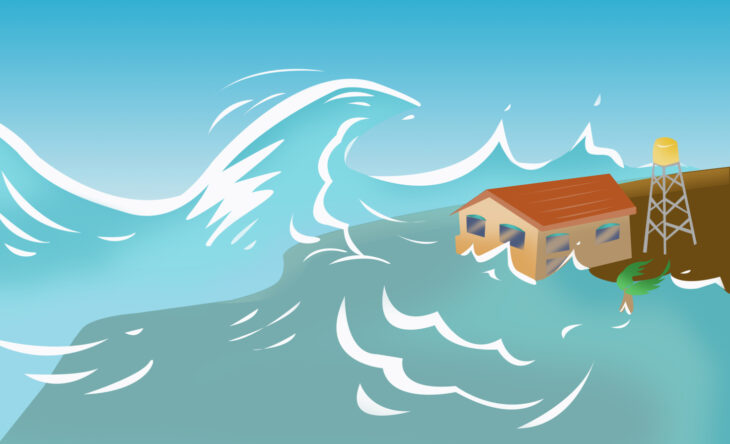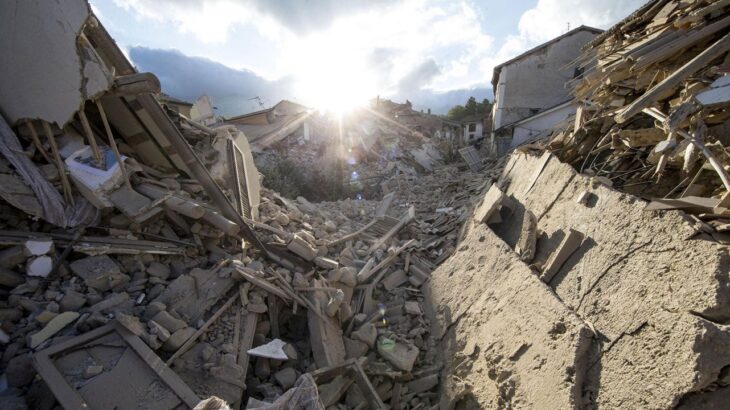The growing climate crisis is a reason for increased damage from natural disasters. It also causes more frequent extreme weather events. In 2024, the world faced threats such as Hurricane Ida and heavy rains in Germany, leading to unprecedented flooding. In the Western United States, the drought broke all records and led to the lowest water level in Lake Mead near Las Vegas on record. Terrible floods also occurred in South Sudan, where 850 thousand people were affected by this disaster.
Reinsurance giant Munich Re has estimated global damage from natural disasters in 2024 at $280 billion. The United States suffered the most damage, with tornadoes, floods, and extreme temperatures hitting it. It is not yet possible to prevent natural disasters. However, there are various methods to mitigate them.

Source: economictimes.indiatimes.com
Contents
What is disaster mitigation?
Mitigation means reducing or limiting the negative impact of natural disasters and various disasters. The effect of these types of hazards often cannot be prevented entirely. However, a significant reduction in the negative impact and scale can be achieved through various strategies and planned actions.
Mitigation involves adopting regular measures to decrease the impact of natural disasters on people and property. The list of these measures includes protecting homes and various infrastructures from floods, earthquakes, and hurricanes. In addition, compliance with building codes, efficient and safe engineering practices, safe construction, development of environmental policies, and public awareness is essential. The term “mitigation” also appears in climate change policies and, in practice, refers to efforts to reduce greenhouse gas emissions.
In any case, the concept of hazard mitigation is seen as the implementation of ongoing actions aimed at eliminating or reducing treats to people and property in the long term. These actions should be taken at multiple levels, including state and federal.

Source: greenbiz.com
How disaster mitigation can help you?
The use of various mitigation methods in combination with technology can help reduce the number of victims of natural disasters. The list includes measures to strengthen the home to protect families and property from various natural disasters, including hurricanes and earthquakes. Mitigation measures can also be taken to help businesses and manufacturing stay operational and avoid damage to facilities in the face of a disaster. It is also crucial to apply mitigation technologies to vital facilities such as hospitals and fire stations, as they must operate during the event or resume immediately after. You can find more information on this topic on eos.com. The adoption of mitigation measures also reduces losses and the subsequent need for resources and money for recovery.
Mitigation can take various forms in practice, depending on threat types. However, the following measures can be taken:
- Accounting for known hazards in land-use planning
- Property protection through insurance
- Moving or lifting structures from the floodplain
- Using hurricane straps to fasten the roof of a building securely.
- Compliance with the developed existing building standards and norms
- Designing bridges and roads for earthquake protection
- Attaching shelves and water heaters to nearby walls.
- Building with fire retardant materials
- Development of a strategy to reduce the susceptibility of business and production to hazards
A critical part of effective mitigation is the implementation of these measures by public authorities. The government at all levels needs to require that new facilities it finances, regulates, or leases are designed, built, and located by modern building standards.

Source: savingplaces.org
Examples of Disaster Mitigation
The negative impact of natural disasters can be reduced through community awareness, warning and forecasting systems. Specific mitigation measures may include zoning and adopting various land-use practices that help reduce or prevent damage. We are talking about a ban on building in areas characterized by landslides and floods. New remote sensing methods application, modern geophysics, and engineering-geological work help experts determine the boundaries of landslide zones accurately. Owning this information, developers can calculate all the risks and choose the most suitable and safe site.
Planning, rules, and regulations also help decrease the risk of damage caused by earthquakes. Seismic Safety Committees can monitor changes in seismic activity, assess risks, and make safety recommendations. It is also vital to provide financial support to businesses and homeowners upgrading earthquake-resistant structures.
In the process of mitigation planning, it is essential to pay attention to the location and design of facilities. It is crucial because a hurricane, fire, or other natural events can cause the loss of natural resources. For example, it should be considered that although pipelines and power lines pass through areas with critical natural resources, damage to these facilities can lead to damage to these same resources. Today, various damage reduction methods are available, including automatic flow controllers and special breakers.
The conservation of plant and animal populations is also an important task. Thoughtful planning can help prevent the destruction of a population in the aftermath of a natural disaster. Part of the population can be relocated, and then the natural phenomenon will not lead to the destruction of rare species of birds and animals.
Conclusion
The increase in the frequency and number of natural disasters is a consequence of climate change. Mitigation plays a vital role in the sphere of the fight against climate change. For example, more attention should be paid to improving the sustainability of production to decrease greenhouse gas emissions as they warm the atmosphere and water on our planet.
As we have said, natural disasters cannot be prevented. Knowing this fact can be an advantage for those who manage emergencies, as they can realistically assess the risks and take action to reduce the negative impact. Planning leads to greater resilience. Modern digital technologies provide high-quality forecasting and warning systems, playing an essential role in eliminating the consequences. In addition, site-specific construction and compliance with all regulations contribute to increased resilience to natural disasters. Having studied all the risks and developed a plan to reduce them, you can respond to threats on time and recover faster.
